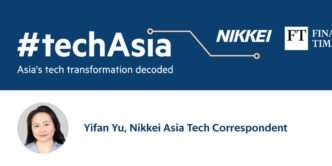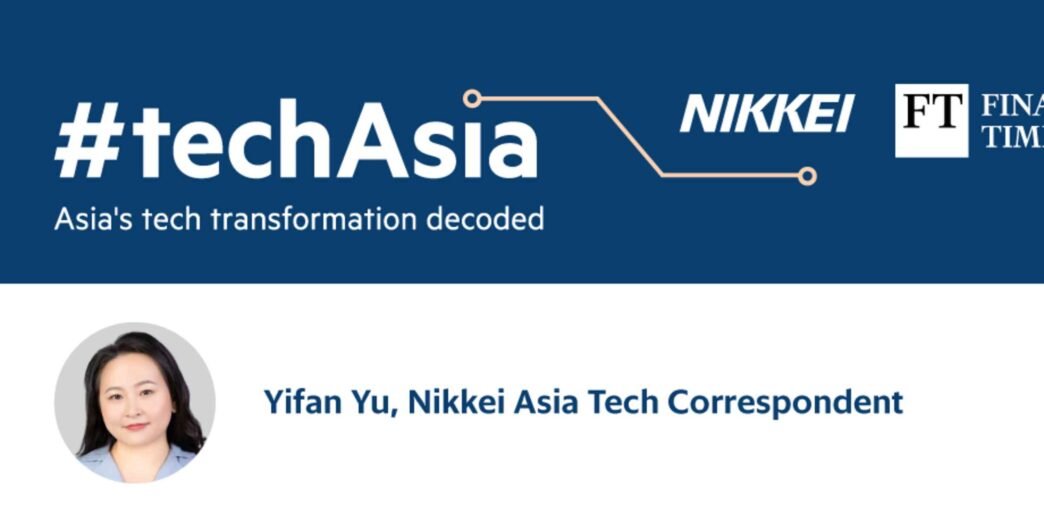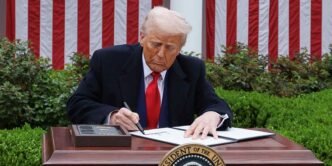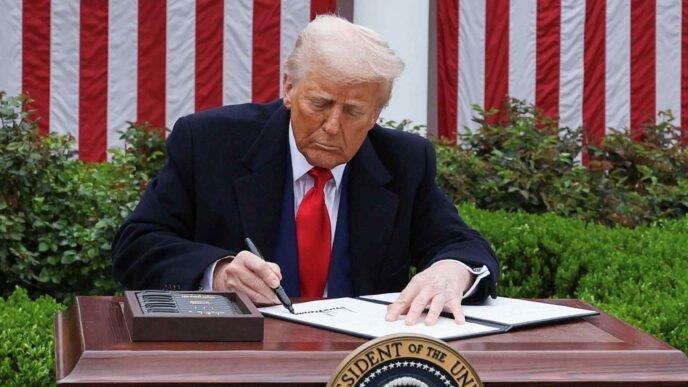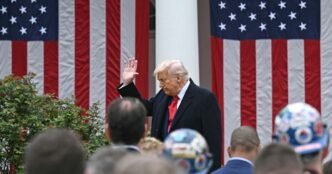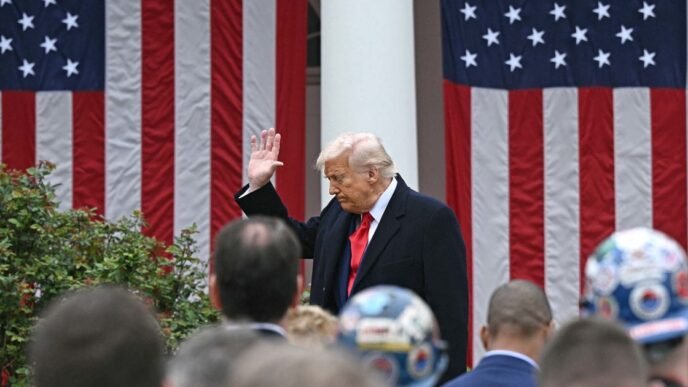Hello from California, this is Yifan, your #techAsia host this week. Yesterday was “Liberation Day” in the U.S., the day President Donald Trump announced a barrage of reciprocal tariffs on China, Japan, the E.U. and other trade partners, allies and foes alike. Meanwhile, his 25% additional levies on auto imports will partially kick in on Thursday.
Trump said the tariffs will rebalance U.S. trade relations and reduce the deficit, but his “First Buddy” Elon Musk might be the first in line to get hurt by rising trade barriers.
Musk’s Tesla has become a political symbol as the tech billionaire spearheads the Department of Government Efficiency (DOGE), a Trump White House task force involved in firing tens of thousands of federal workers in a push to drastically shrink the government and improve its spending efficiency. Protests against Tesla have been held across the globe and Tesla’s stock has been in free fall this year.
In the San Francisco Bay Area — the former home of Tesla headquarters and the first place in the U.S. to embrace EVs — I’ve seen several Teslas driving down Highway 101 with their T-shaped logo removed.
Trump’s new tariffs are expected to add further headwinds for the company, particularly in its home market. While the California gigafactory might be where most of its U.S. vehicles are finished and shipped, its auto parts supply chain will still be subject to the additional levies. Tesla shares dropped more than 8% during extended trading Wednesday following the tariff announcement.
Meanwhile, Trump has put surprisingly high reciprocal tariffs on Southeast Asian countries, including Cambodia and Vietnam, which were slapped with rates of 49% and 46%, respectively, more than the 34% China faces.
Vietnam has emerged as a winner of the tech supply chain diversification in recent years as companies move away from their Chinese factories to the Southeast Asian country, in response to the growing trade barriers the U.S. put toward China.
Other popular alternative supply chain destinations such as India and Indonesia have also been slapped with steep tariffs. Will Southeast Asia remain a popular choice among tech companies to build out their supply chains, or will building in the U.S. be the only option going forward? Either way, American consumers are in for a rough ride in the months to come.
Tesla’s turbulence and BYD’s boom
2025 has started quite differently for BYD and Tesla. The two carmakers have been in a neck-and-neck race for the global EV crown since 2023. While both are facing headwinds, including intensifying competition, weakening economies, slowing demand and tariffs, Elon Musk is throwing a wrench in the works for Tesla.
China’s BYD has outsold Tesla in electric vehicles for a second straight quarter as the U.S. automaker faces a backlash over CEO Elon Musk’s political activities, Nikkei Asia’s Yifan Yu reports.
For the Janu-March period, Tesla delivered 336,681 vehicles worldwide, down around 13% compared to the same period last year. BYD, meanwhile, delivered 416,388 battery electric vehicles (BEVs) in the first three months of 2025, up 38.74% year-on-year.
Tesla is set to report its first quarter earnings later this month, and investors will be eager to hear how Musk intends to turn around the brand’s image as the CEO of the EV pioneer increasingly stands in contradiction to the values of many of its customers.
The road to profitability
Chinese autonomous driving company WeRide has said it hopes to become profitable within five years but warned that uncertainty over international government regulation and commercial partnerships make the timing “difficult to predict,” write the Financial Times’s William Langley and Gloria Li.
Tony Han, founder and chief executive of the Nasdaq-listed company, said autonomous driving required huge investment and generating returns would be a “long process.” The Nvidia-backed company has reported higher losses in each of the past three years.
“What I want in the next five years is that first of all … this company can become profitable,” Han told the Financial Times. “I think from a technology perspective it will definitely support this within five years, but there are more commercial and policy considerations.”
Robotaxi businesses operated by the sector’s leading companies — including Chinese internet search group Baidu and local rival Pony.ai, as well as Google’s Waymo in the U.S. — had yet to report profits, said analysts.
Lu Daokuan, an analyst at S&P Global Mobility, said high costs for software, maintenance and research were likely to prevent Chinese robotaxi groups achieving profitability until at least 2028.
“Full-scale commercialization is only possible … when robotaxis can perform as well as human drivers on the road,” said Lu.
Big to bigger?
U.S. contract chipmaker GlobalFoundries and United Microelectronics Corp., Taiwan’s No. 2 chipmaker, are exploring the possibility of a merger amid American efforts to mitigate risks surrounding the Taiwan Strait and fend off growing competition from China in mature chips, Nikkei Asia’s Cheng Ting-Fang writes.
The tie-up would create a bigger, U.S.-based company with a production footprint across Asia, the U.S. and Europe. The aim of the merger would be to create a company with the economic scale to ensure America has access to mature chips as tensions simmer between China and Taiwan and as China produces more chips on its own.
Regardless of the outcome, the GlobalFoundries-UMC talks underscore America’s desire to lower its dependence on Taiwan, which is home to the world’s second-largest chip economy by revenue. Perhaps this is also why Intel’s new CEO said this week that the American chip giant is still committed to its foundry business, despite recent setbacks, as it has an “essential role” in securing the U.S. chip supply chain.
Humanoids with Chinese characteristics
Did you see the viral video in which a group of humanoid robots dance alongside human performers on Chinese state broadcaster CCTV’s Lunar New Year Gala in Janu? The robots might have looked a bit funny, awkwardly waving handkerchiefs up and down, but they have become a treasured priority for Beijing, Nikkei Asia’s Cissy Zhou and Ryohtaroh Satoh write.
Similar to EVs and smartphones, China’s government policies have prioritized humanoid robots as “disruptive products,” with the market expected to reach $43 billion by 2035.
After Elon Musk introduced an Optimus prototype in 2022, China’s Ministry of Industry and Information Technology issued industrial development guidance the following year, saying the country would strive to mass-produce humanoid robots by 2025 and seek to build a globally competitive industrial ecosystem.
Between the world’s top two economies, the U.S. has the edge in AI chips, software and algorithms, while China has the advantage in AI algorithm development as well as a strong supply chain that can offer quality components at low costs.
Welcome to the Tech Latest podcast. Hosted by our tech coverage veterans, Katey Creel and Akito Tanaka, every Tuesday we deliver the hottest trends and news from the sector.
In this episode, Akito speaks with Taipei tech correspondent Lauly Li about why TSMC is pushing ahead with a $165 billion expansion in the U.S. and what it will mean for the future of the chipmaker and its home market of Taiwan.
Find us on Apple Podcasts | Spotify | Amazon Music | Voicy | YouTube | YouTube Music
Suggested reads
1. China’s AI race creates tension at home (FT)
2. Limit foreign funding in Japan’s Rapidus, former chip czar says (Nikkei Asia)
3.TSMC buys time with $100bn US investment pledge (FT)
4. Indian billionaire Binny Bansal bets on consumer business in Asia (Nikkei Asia)
5. Tencent takes 1.2bn euro stake in spin-off from ‘Assassin’s Creed’ maker Ubisoft (FT)
6. Sony brings high-def cameras to American football refs (Nikkei Asia)
7. Vietnam’s FPT launches AI and semiconductor R&D center in Da Nang (Nikkei Asia)
8. Taiwan accuses Chinese chipmakers of illegally poaching engineers (FT)
9. ASML to quintuple advanced EUV chip tools staff in Japan (Nikkei Asia)
10. Mario enters trade wars as Nintendo readies Switch 2 launch (FT)
For more great stories like this delivered to your inbox every week, sign up to our #techAsia newsletter. Current subscribers, click here to update your newsletters preferences.
